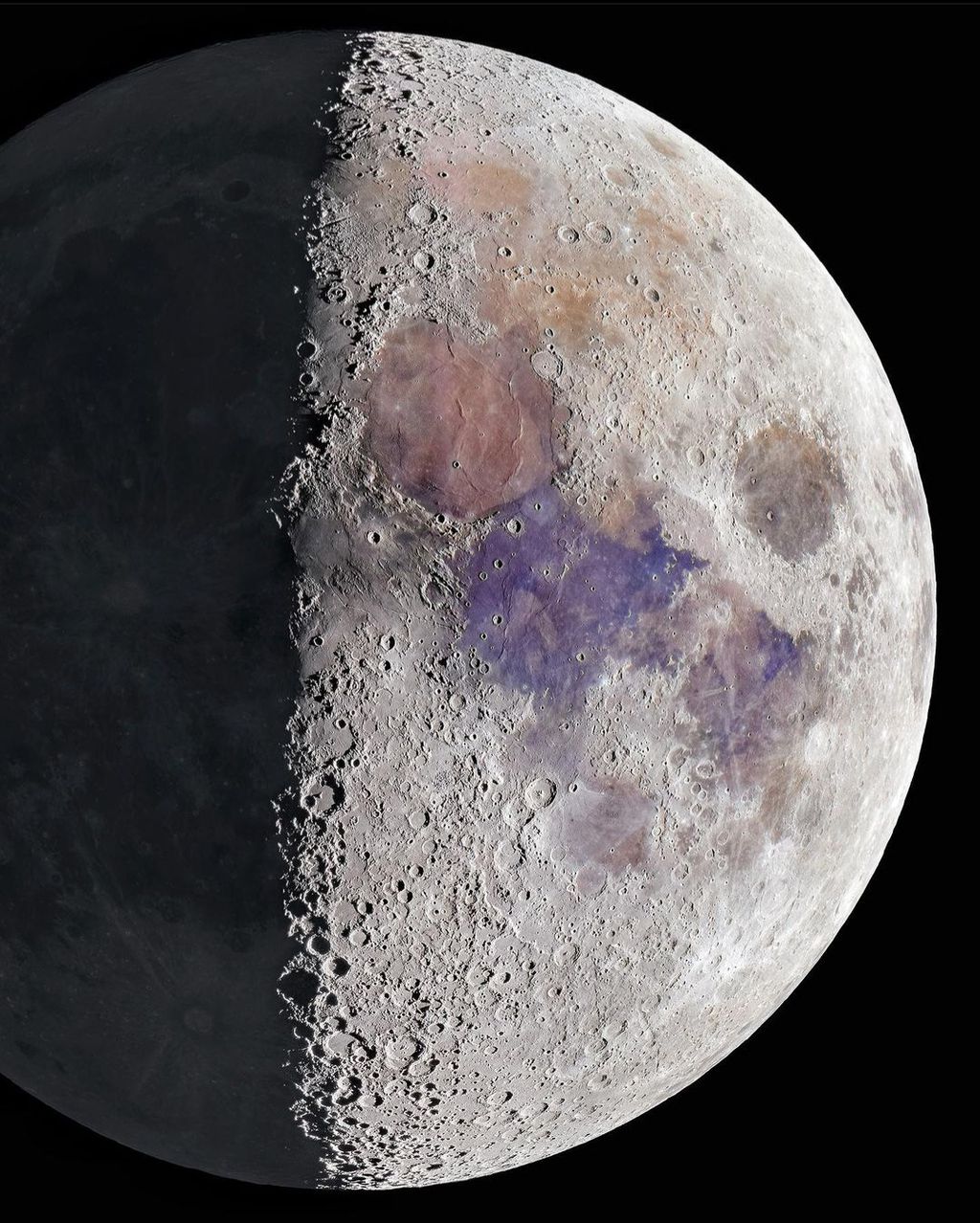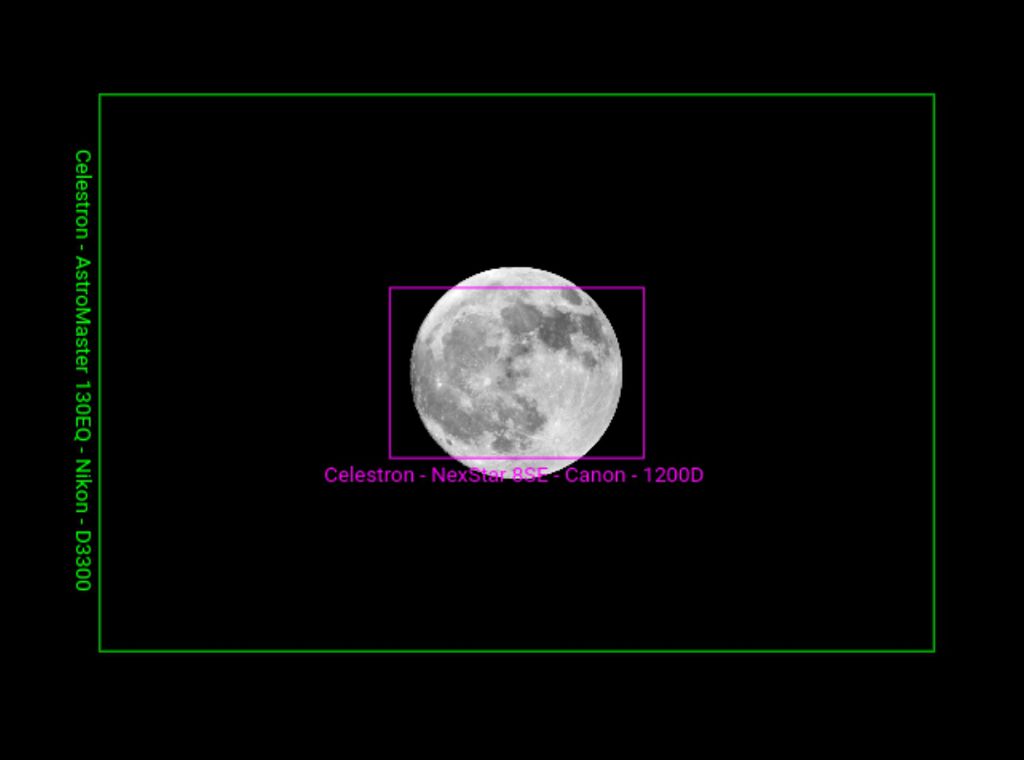Good afternoon everyone,
I open this thread from the base that I am going through an artistic block and I have not been able to take a photo of my satisfaction in the last weeks.
So while looking for new ideas, I came across this proposal: Get a lunar image with the highest possible resolution.
I follow a well known photographer on ig (daryavaseum) who takes photos of this style with his Canon EOS 1200D and a Nexstar 8se. (below a photo of him)

I have a Nikon D3300 and a Celestron 130EQ. You could practically say a similar gear. I know his telescope is better, but it can't just be the telescope that gives you that brutal image quality (below a photo of me)

I think that I do the only thing that can be done to photograph the moon without making mosaics. A night with good seeing, do it with the maximum possible zoom, and take hundreds of photos and then stack them.
My final question is: comparing our photos, how is it possible to get such an impressive detail of the lunar surface, its craters, etc. Is there any technique that I don't know yet to get those photos?
Do you lunar photographers have any tips or tricks to improve the quality of your photos? or simply, I already reached my limit of quality with my team, and it will be almost impossible for me to improve it.
|
You cannot like this item. Reason: "ANONYMOUS".
You cannot remove your like from this item.
Editing a post is only allowed within 24 hours after creating it.
You cannot Like this post because the topic is closed.
Ive found that it works best to use a Barlow (2 or 3x) along with the live zoom feature on your DSLR (if it has one) then create a mosaic using each stacked image you take. You don't have to put long into each image (generally a 30-60s video should work fine, stacked using software such as Autostakkert and sharpened in Registax). Lining up the stacked images to make a mosaic can be done using software but as long as you keep the same rotation in every image and keep track of which areas you have/haven't covered it can be done manually.
That kind of resolution can only really be achieved with the right pixel scale (<.5"/px, and since there aren't really any sensors big enough to cover the entire moon at that scale you will have to make a mosaic) and with lucky imaging to get sharper details and negate the effects of seeing.
If you also want to get those vibrant colours shown in the image, you could use the sharp mosaic as a luminance layer, then take lower resolution images without a Barlow (Stacking those frames as well to remove noise) and process that to bring out the colours, applying it as a Colour Layer.
You'll want to do it on a night with good seeing and make sure to keep track of all the video files you've captured to make sure you've got everything, especially if you are centering each image manually. Try testing out stacking different % of frames and different sharpening techniques on a single image beforehand to find a way that gets you the best results, then do that for every frame.
By using your current camera and telescope, along with a 3x Barlow (FL of 1950mm) you'd get a pixel scale of ~0.41"/Px which could yeild some good results, along with good seeing and processing. You'd probably have the capture 5-10 Images for a mosaic.
|
You cannot like this item. Reason: "ANONYMOUS".
You cannot remove your like from this item.
Editing a post is only allowed within 24 hours after creating it.
You cannot Like this post because the topic is closed.
|
from my experience, mind you with an SCT, focus and seeing are everything. Along with sampling, oversampling with bad seeing gets you nowhere.
|
You cannot like this item. Reason: "ANONYMOUS".
You cannot remove your like from this item.
Editing a post is only allowed within 24 hours after creating it.
You cannot Like this post because the topic is closed.
|
I know people use Registax wavelets for sharpening and photoshop for saturation and fine tuning.
|
You cannot like this item. Reason: "ANONYMOUS".
You cannot remove your like from this item.
Editing a post is only allowed within 24 hours after creating it.
You cannot Like this post because the topic is closed.
i need to preface this by saying i'm not a lunar imager
your gear is significantly different, your focal length is about 600mm while his is about 2000mm, so the pixel scale is very different, however i dont think this is going to fully account for the difference.
it's seeing and processing that makes the difference, i'm not sure how you processed your image but i'm willing to bet his image was taken with excellent seeing conditions as well as using software that uses lucky imaging or stacking to help mitigate the effects of seeing as well. look up tutorials on lunar imaging, there are a lot of different types of software specifically for this but i'm not very familiar with them, it's the same type of software and processing that is used for planetary imaging.
you should be able to get a sharper image using those techniques and software like registax, autostakkert, etc... they also utilize something called wavelet processing which helps bring out detail through atmospheric distortion.
sorry if any of this is incorrect/uninformed but that's the limits of my understanding. also i would hardly call your image quality "brutal" sure by comparison the other image is sharper but a lot of effort goes into making a lot of those photos and they are far above the quality of a normal image without specialized techniques.
|
You cannot like this item. Reason: "ANONYMOUS".
You cannot remove your like from this item.
Editing a post is only allowed within 24 hours after creating it.
You cannot Like this post because the topic is closed.
I think the difference in sharpness is likely due to the equipment.
Are you using a coma corrector on your 130EQ? Newtonian telescopes are only sharp in the center of the field of view without a coma corrector, especially at f/5. You can see the stars in your image are comet-shaped. The telescope might need to be collimated as well.
Your Celestron 130EQ setup captures the lunar detail at 1.24" per pixel. An 8SE plus 1200D has much better sampling of the fine detail (0.44" per pixel) and that allows more aggressive sharpening.
Below is the difference in field of view from each setup, you can use e.g. https://astronomy.tools/calculators/field_of_view/
 |
You cannot like this item. Reason: "ANONYMOUS".
You cannot remove your like from this item.
Editing a post is only allowed within 24 hours after creating it.
You cannot Like this post because the topic is closed.
|
One more thing, the colors in daryavaseum's image are made with a special processing technique. Try searching for 'mineral Moon' processing tutorials.
|
You cannot like this item. Reason: "ANONYMOUS".
You cannot remove your like from this item.
Editing a post is only allowed within 24 hours after creating it.
You cannot Like this post because the topic is closed.
I am a real novice with astrophotography but am more experienced with a m camera, but managed this with an Altair 115mm and ZWO ASI485; I took around 16 x 45s videos via ASIAIR (manually moving coverage each time), processed and sharpened in autostakkert to 16 x .tiff files, and merged the .tiffs into one monochrome image using photoshop’s photomerge option. My only comment to add to the others here would be that having good focus is essential, and to avoid changing focus during the process of capturing the videos. |
You cannot like this item. Reason: "ANONYMOUS".
You cannot remove your like from this item.
Editing a post is only allowed within 24 hours after creating it.
You cannot Like this post because the topic is closed.
Thank you very much for all the comments and advice. I will try to answer a bit in a general way. I use a 130EQ with a barlow x2, which gives me a field similar to the Nexstar (that's why I said similar). The full moon covers me practically from side to side in the camera frame.
And for processing, i use pipp to prealign, align and stack in autostackert, and finally use wavelets in registax, and a bit more in photoshop. I realized something also fundamental. this photographer shoots around 1000 raws, and stacks the 20-30% (200-300raws) best.
I, on the other hand, did 300raws and piled up only about 100 photos. so that makes a big difference. He has better and more photos stacked than me.
I also understand that seeing is essential, so I will see nights which are in perfect condition to try.
Thank you all, and keep trying, practicing, and learning from mistakes.
|
You cannot like this item. Reason: "ANONYMOUS".
You cannot remove your like from this item.
Editing a post is only allowed within 24 hours after creating it.
You cannot Like this post because the topic is closed.
to create to post a reply.







